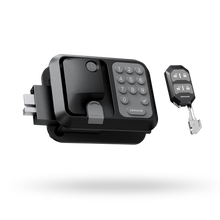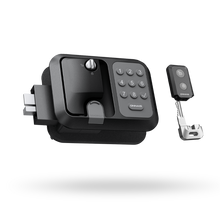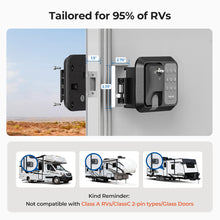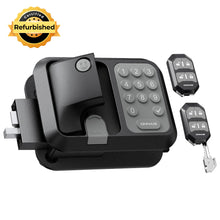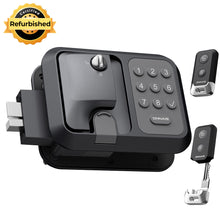How to Winterize Your RV Locks: A Complete Guide to Prevent Freezing and Ensure Smooth Operation
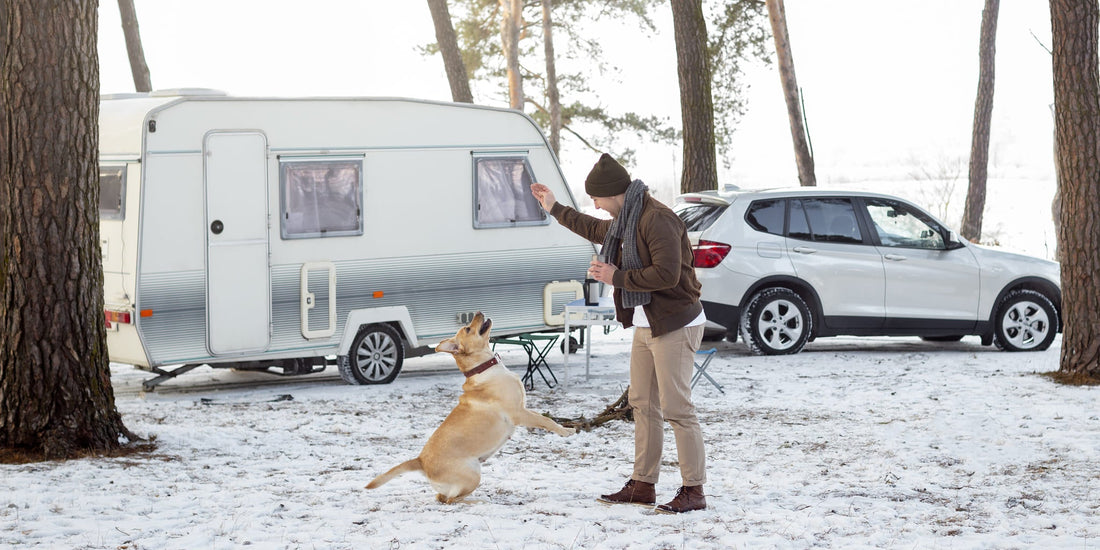
When the temperatures drop and frost coats your RV, one of the most common frustrations among RV owners is frozen or jammed locks. Whether it’s your entry door, storage compartment, or hitch lock—frozen mechanisms can turn a peaceful winter trip into a stressful situation. As an RV maintenance expert who’s spent many winters camping in sub-freezing conditions, I can tell you that proper lock care before winter hits is crucial.
This guide will walk you through everything you need to know to winterize your RV locks, including how to clean, lubricate, protect, and troubleshoot them during winter. We’ll also recommend some top products to keep your locks working like new all season long.
Why RV Locks Freeze in Winter
RV locks freeze primarily because of moisture infiltration. When Water—from condensation, rain, melting snow, or washdown—seeps into the tight tolerances of the lock cylinder and internal mechanisms, it can solidify in cold weather, causing the pins or tumblers to seize. In addition, dust or old lubricant can thicken or harden in low temperatures, adding more resistance.
Frozen locks can:
- Damage your key or key cylinder if you force entry
- Prevent access to critical compartments like propane or water tanks
- Cause corrosion and long-term wear
The good news? With a bit of seasonal prep, you can completely prevent lock freeze and extend your locks’ lifespan.
Step 1: Clean Your Locks Before the Freeze
Frequency: Once before winter, then once mid-season if you’re using your RV regularly.
Why it matters: Dirt, old grease, and residue trap moisture. Cleaning ensures new lubricants can penetrate effectively.
Tools and Materials:
Lock cleaner or contact cleaner
A small nylon brush or toothbrush
Compressed air or a handheld air blower
Lint-free cloth
Procedure:
Spray a cleaner directly into the keyhole and latch area. Avoid harsh degreasers like brake cleaner—they can strip internal coatings.
Insert and turn the key several times to loosen debris.
Brush around the exterior of the keyway and moving parts to remove grime.
Blow out moisture and dust using compressed air.
Wipe everything clean with a dry cloth.
Pro Tip: Avoid using WD-40 as your long-term lock lubricant—it’s great for cleaning but not ideal for lasting winter protection.
Step 2: Apply Cold-Weather Lock Lubricant
The key to winter lock performance is using a lubricant that does not attract moisture or dirt and remains effective in sub-zero temperatures. Locksmiths and experts generally recommend PTFE (Polytetrafluoroethylene, often branded as Teflon) or Graphite-based dry lubricant
Recommended lubricants:
PTFE Dry Lube (Best All-Around): PTFE sprays dry quickly, leaving behind a slick, durable, microscopic film that repels water (it's "hydrophobic") and doesn't attract dust. It’s excellent for the lock cylinder and all exterior mechanisms.
Powdered Graphite (Traditional/Cylinder Only): A very effective dry lubricant for the internal cylinder mechanism, but it can be messy and is generally less recommended for the exterior latch and deadbolt parts.
Lubrication process:
Insert the straw nozzle of the lubricant into the keyhole. Apply a small amount—just enough to coat the pins.
Insert your key and gently turn it several times to distribute the lubricant.
Wipe off excess lubricant that seeps out.
Spray latch mechanisms and hinges with a Teflon or silicone-based lubricant to ensure smooth movement.
Avoid grease or oil-based lubricants—they attract dust and can thicken in freezing temperatures.
Step 3: Use Protective Lock Covers or Caps
Protective covers are one of the simplest yet most effective ways to block moisture and ice from entering your locks.
Recommended types:
Magnetic keyhole covers (great for entry doors and hitches)
Rubber cap-style covers (ideal for storage compartments)
All-weather lock shields
Installation tip:
Clean the area around the keyhole before attaching the cover. Make sure it seals snugly to prevent water intrusion.
If you frequently travel or store your RV outdoors, consider lock de-icing covers that provide extra insulation.
Step 4: Keep Moisture Out of Compartments
Even the best-maintained locks can freeze if condensation builds up inside your compartments. During winter, cold air outside and warm air inside can create trapped moisture.
Preventive actions:
Use RV moisture absorbers or silica gel packs in storage bays.
Check seals and gaskets around your doors and hatches for cracks. Replace if necessary.
Avoid washing your RV right before freezing; trapped water can quickly refreeze inside lock housings.

Step 5: Emergency Solutions for Frozen Locks
If your lock freezes despite your best efforts, don’t panic. Here’s what you can do safely—without damaging the mechanism.
What to do:
Warm the key, not the lock.
Use a lighter or hair dryer to gently warm your key (not red-hot). Insert it into the lock to melt internal ice.
Use a commercial de-icer.
Spray products directly into the keyhole.
Avoid pouring hot water.
It may thaw the ice temporarily but can cause refreezing and corrosion later.
Gently tap, don’t force.
If the key won’t turn, gently tap the lock with your hand to break minor ice bonds—forcing it may snap your key.
Pro Tip: Keep a small lock de-icer spray in your RV or winter toolkit.
Step 6: Schedule Regular Winter Checks
Winter lock care isn’t a one-time job. Especially if you travel frequently or your RV sits outdoors, aim for quick checks every few weeks.
Inspection checklist:
✅ Check if locks operate smoothly
✅ Wipe away ice or condensation buildup
✅ Reapply lubricant every 6–8 weeks
✅ Make sure covers or seals remain tight
If you store your RV for the season, recheck your locks once mid-winter to ensure they haven’t corroded or seized from lack of use.
Step 7: Maintain Your Keys and Key Fobs
Cold weather can also affect electronic RV key fobs or remote entry systems.
Replace batteries before winter (low temps drain them faster).
Keep spare keys and fobs indoors or in a warm place.
For mechanical keys, lightly coat them with a dry lubricant to prevent sticking in the cylinder.
Conclusion
Proper lock maintenance may seem minor compared to plumbing or insulation prep, but frozen locks can quickly ruin your day—and potentially damage your RV’s locking systems.
By following essential winter RV lock maintenance steps, you’ll ensure every door, latch, and storage bay stays accessible—even in sub-zero weather.

